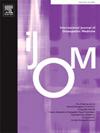Effects of pain education delivered through telerehabilitation on pain and disability in patients with chronic musculoskeletal pain: A systematic review protocol
IF 1.5
4区 医学
Q2 MEDICINE, GENERAL & INTERNAL
引用次数: 0
Abstract
Background
Chronic musculoskeletal (MSK) pain is an urgent global public health concern. Pain education (PE) is an intervention used in the management of MSK pain. Traditionally delivered in-person, PE can be challenging for those in remote areas. Telerehabilitation has emerged as a viable alternative for providing pain management support. Despite the individual benefits of PE and telerehabilitation, no systematic review has evaluated the impact of these interventions combined on chronic MSK pain.
Objective
To systematically review the literature on the effects of pain education delivered through telerehabilitation on pain and disability in patients with chronic musculoskeletal pain.
Methods
This systematic review protocol will follow the Preferred Reporting Items for Systematic Reviews and Meta-Analyses Protocols (PRISMA-P) statement and is registered with the Prospective Register of Systematic Reviews (PROSPERO). We will systematically search the MEDLINE, PEDro, Cochrane Central Register of Controlled Trials, Scopus, Web of Science and EMBASE databases from their inception to present time. We will include only randomized controlled trials involving adults with chronic MSK pain, that received PE delivered through telerehabilitation. The primary outcomes will be pain and/or disability, while secondary outcomes will assess the impact of pain on daily living, workability and mental health. Two authors independently will select studies, rate risk of bias, extract data, and judge the overall certainty of evidence using Grading of Recommendations, Assessment, Development and Evaluation (GRADE). A structured narrative synthesis will be used for data analysis. When possible, quantitative findings will be pooled and meta-analyses will be performed.
Discussion
This review will comprehensively examine existing literature to identify research gaps and provide evidence to help clinicians make informed, evidence-based decisions for managing chronic musculoskeletal pain.
Review registration
CRD42024534188.
通过远程康复提供的疼痛教育对慢性肌肉骨骼疼痛患者疼痛和残疾的影响:一项系统回顾方案
背景慢性肌肉骨骼(MSK)疼痛是一个迫切的全球公共卫生问题。疼痛教育(PE)是一种用于MSK疼痛管理的干预措施。传统上,体育课是面对面授课,对偏远地区的人来说可能是一项挑战。远程康复已成为提供疼痛管理支持的可行替代方案。尽管体育锻炼和远程康复对个体有好处,但没有系统的综述评估这些干预措施对慢性MSK疼痛的影响。目的系统回顾远程康复疼痛教育对慢性肌肉骨骼疼痛患者疼痛和残疾的影响。方法本系统评价方案将遵循系统评价和荟萃分析方案的首选报告项目(PRISMA-P)声明,并在前瞻性系统评价登记册(PROSPERO)注册。我们将系统地检索MEDLINE、PEDro、Cochrane Central Register of Controlled Trials、Scopus、Web of Science和EMBASE数据库,从它们成立至今。我们将只纳入随机对照试验,涉及成人慢性MSK疼痛,通过远程康复接受PE。主要结果将是疼痛和/或残疾,而次要结果将评估疼痛对日常生活、工作能力和心理健康的影响。两位作者将独立地选择研究,评估偏倚风险,提取数据,并使用推荐、评估、发展和评价分级(GRADE)来判断证据的总体确定性。数据分析将使用结构化的叙述综合。在可能的情况下,将对定量结果进行汇总并进行荟萃分析。本综述将全面检查现有文献,以确定研究空白,并提供证据,帮助临床医生做出明智的、基于证据的慢性肌肉骨骼疼痛管理决策。回顾registrationCRD42024534188。
本文章由计算机程序翻译,如有差异,请以英文原文为准。
求助全文
约1分钟内获得全文
求助全文
来源期刊
CiteScore
2.20
自引率
36.80%
发文量
42
审稿时长
3 months
期刊介绍:
The International Journal of Osteopathic Medicine is a peer-reviewed journal that provides for the publication of high quality research articles and review papers that are as broad as the many disciplines that influence and underpin the principles and practice of osteopathic medicine. Particular emphasis is given to basic science research, clinical epidemiology and health social science in relation to osteopathy and neuromusculoskeletal medicine.
The Editorial Board encourages submission of articles based on both quantitative and qualitative research designs. The Editorial Board also aims to provide a forum for discourse and debate on any aspect of osteopathy and neuromusculoskeletal medicine with the aim of critically evaluating existing practices in regard to the diagnosis, treatment and management of patients with neuromusculoskeletal disorders and somatic dysfunction. All manuscripts submitted to the IJOM are subject to a blinded review process. The categories currently available for publication include reports of original research, review papers, commentaries and articles related to clinical practice, including case reports. Further details can be found in the IJOM Instructions for Authors. Manuscripts are accepted for publication with the understanding that no substantial part has been, or will be published elsewhere.

 求助内容:
求助内容: 应助结果提醒方式:
应助结果提醒方式:


